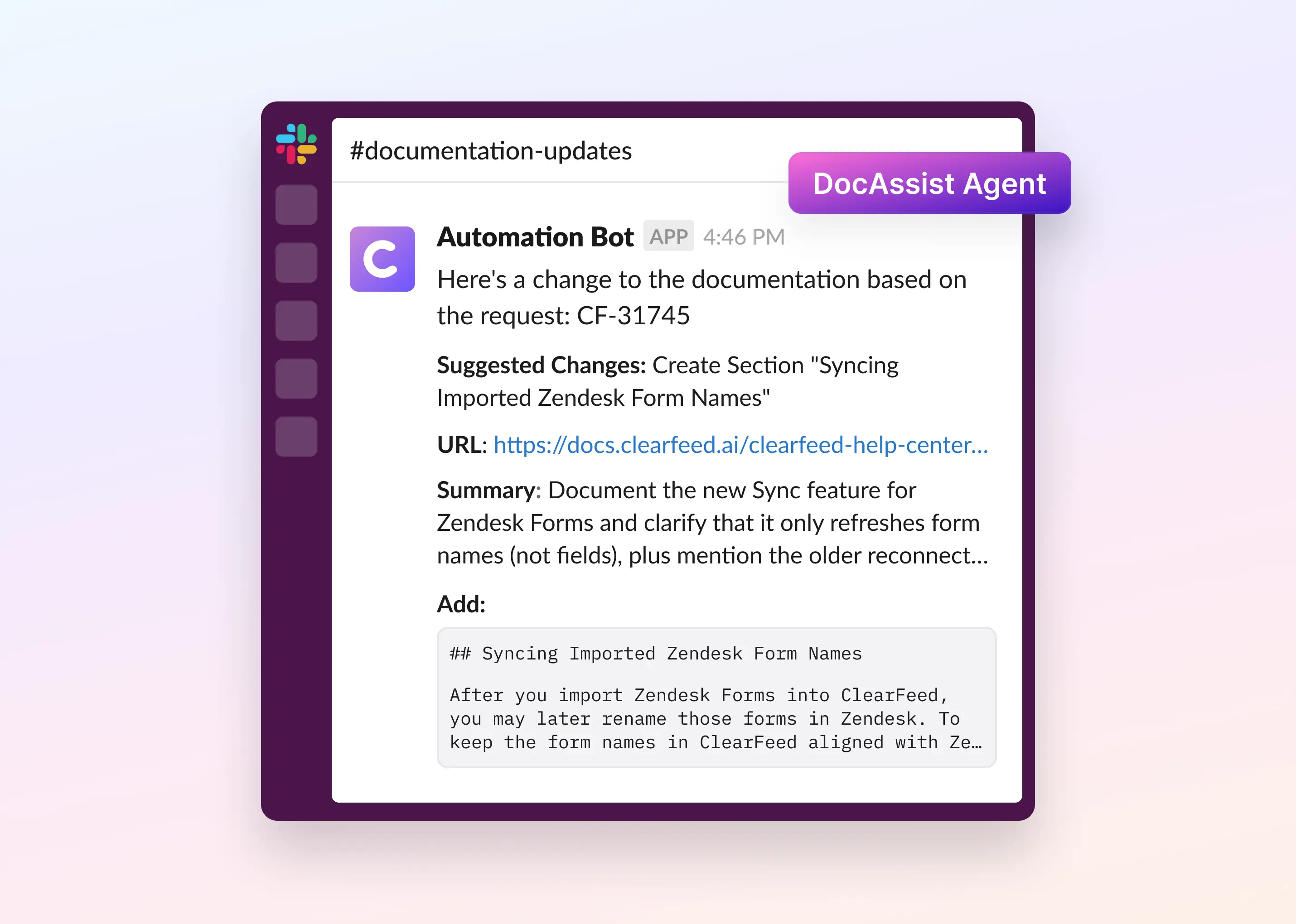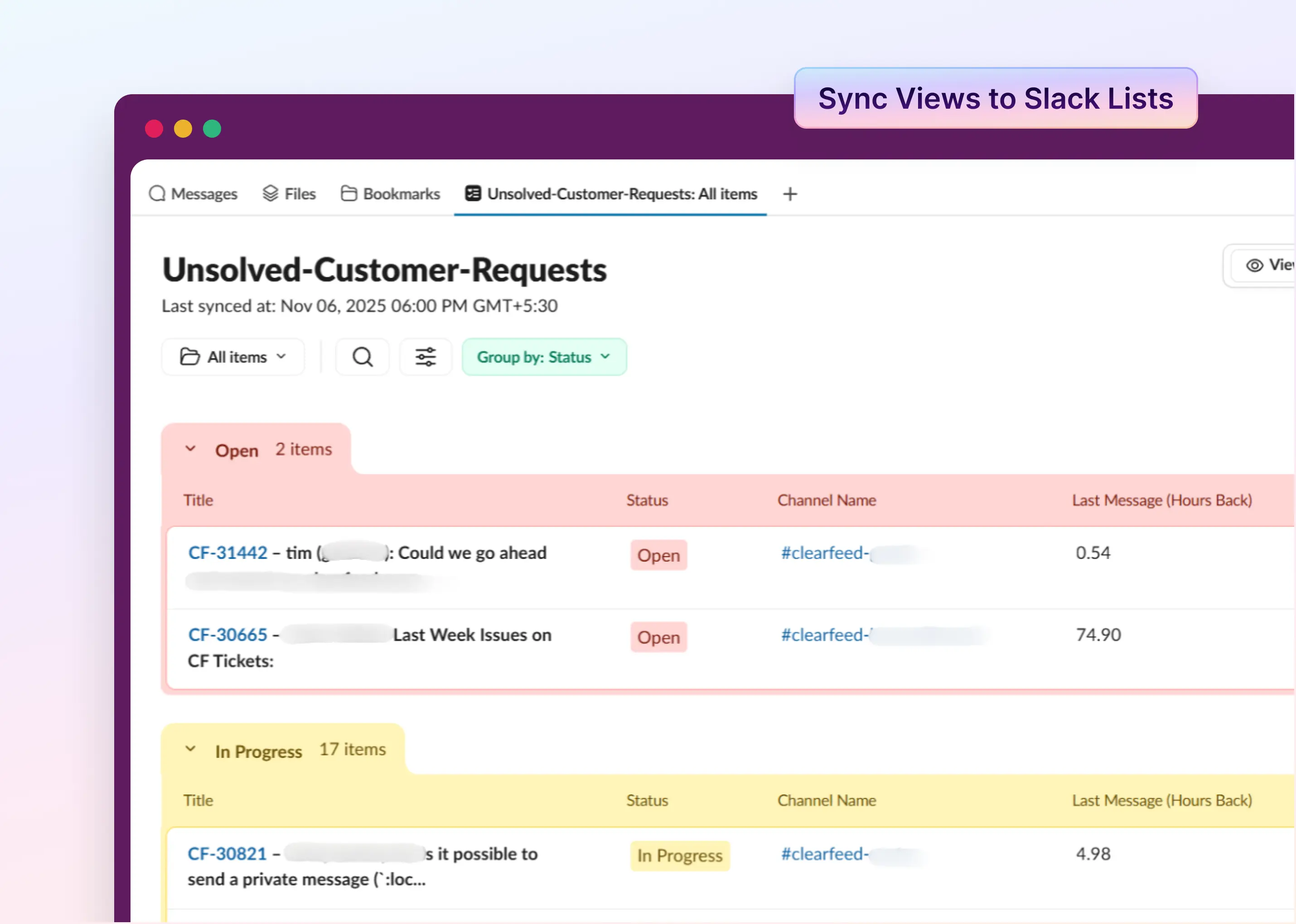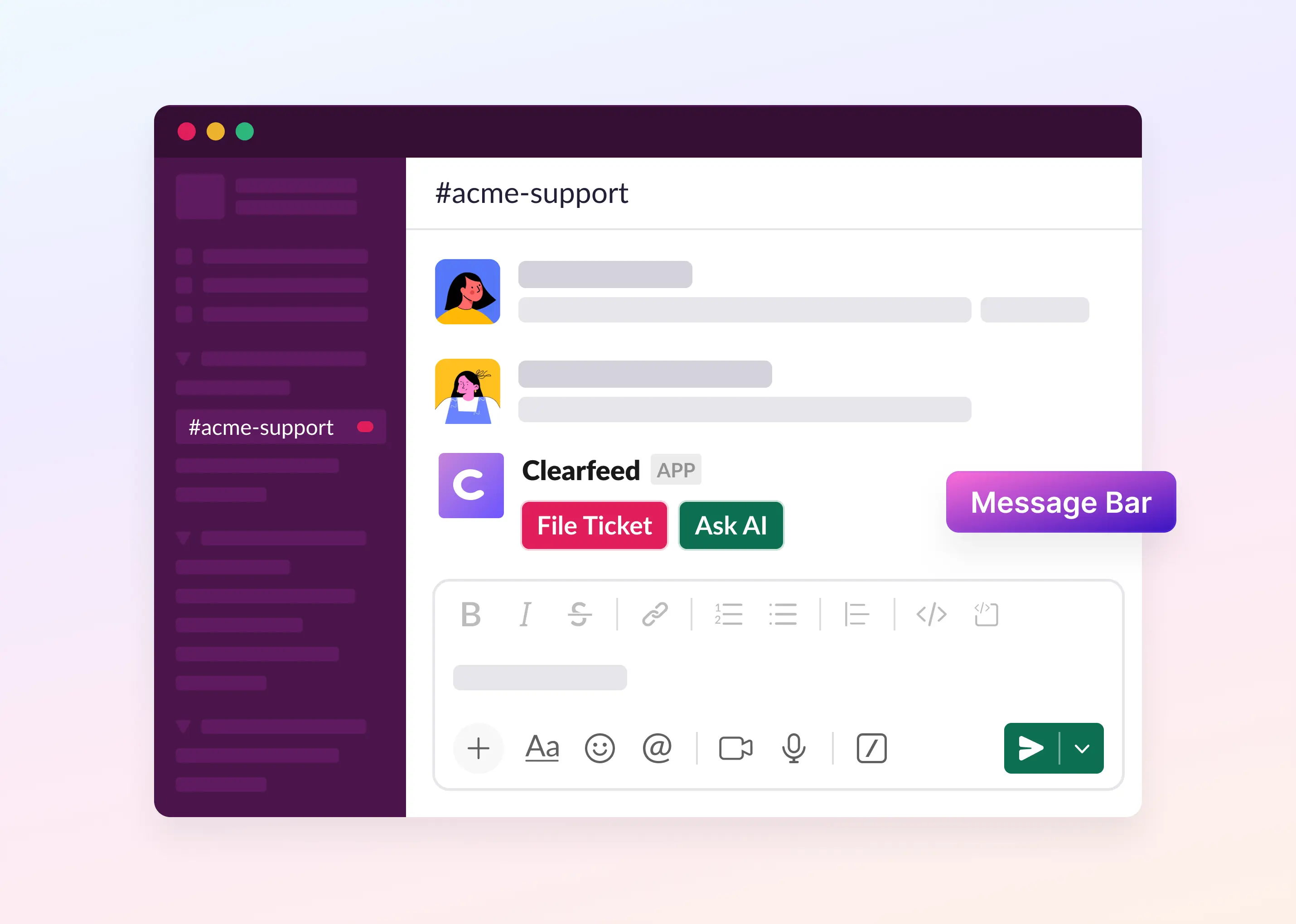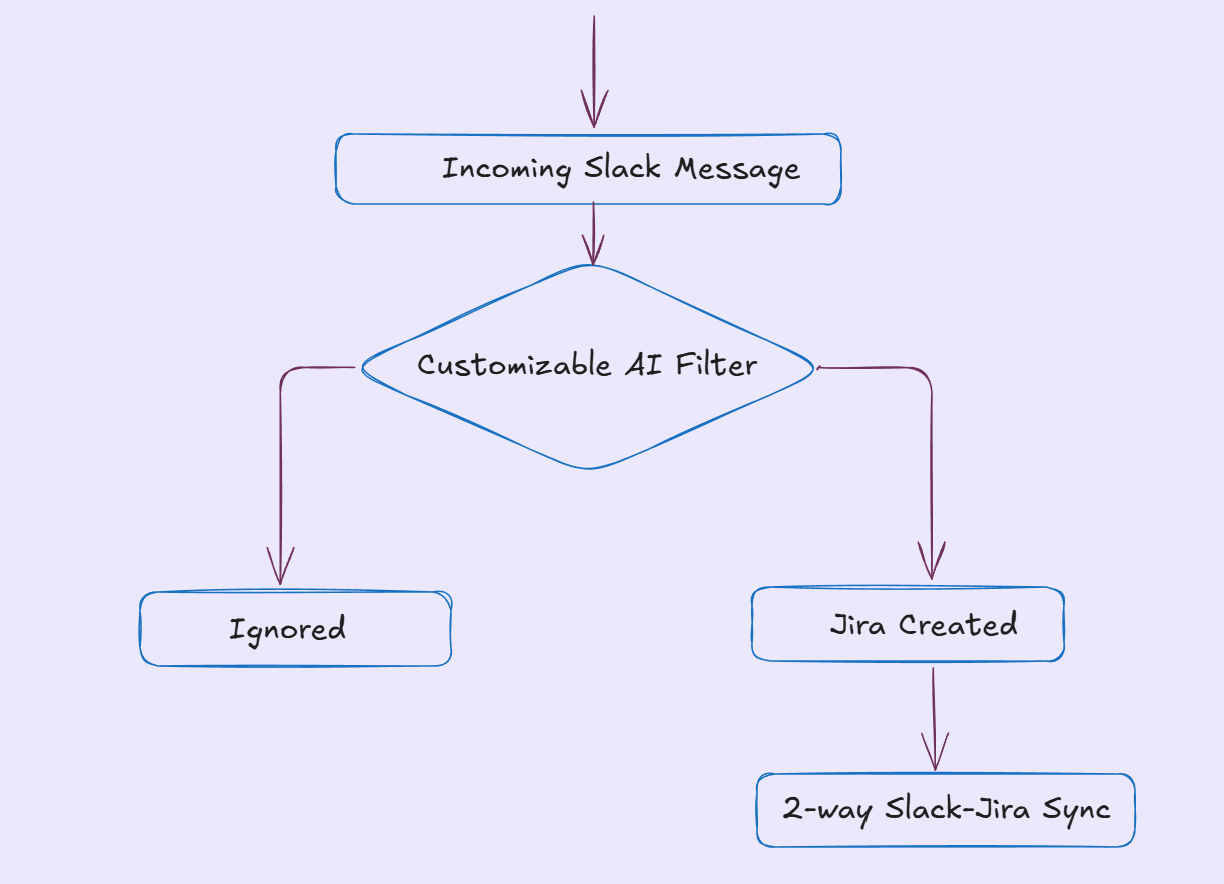Have you ever wished your team could respond to critical incidents without constantly switching between different tools? The PagerDuty-Slack integration changes how your team handles incidents by directly bringing essential alerts and actions into your everyday communication platform.
What Is PagerDuty-Slack Integration?
The PagerDuty-Slack integration links PagerDuty with Slack so that when something happens in PagerDuty, notifications and alerts are automatically sent to specific Slack channels. Here’s a simple explanation of how it works:
Imagine your system detects that a server’s CPU usage is too high. This triggers an alert in PagerDuty. Thanks to the integration, your team instantly gets a message in Slack. The sent message contains important details like how serious the issue is, a description of the problem, and who is in charge of fixing it.
The integration is powerful because it allows team members to do various actions directly from Slack:
- Acknowledge incidents without leaving Slack
- Reassign incidents to other team members
- Add notes for more details or updates
- Mark incidents as resolved when they're fixed
Benefits of PagerDuty-Slack Integration
The integration of PagerDuty with Slack offers significant advantages for teams managing incidents and outages, enhancing efficiency, collaboration, and transparency. Here's a breakdown of the key benefits:
1. Centralized Incident Command Centers
The integration's core strength lies in creating dedicated incident channels, which serve as centralized command centers during critical events. When an incident occurs, the system automatically generates a Slack channel specifically for that incident. This eliminates the common problem of scattered communications and ensures everyone involved has access to the same real-time information.
2. Intelligent Notification Routing
The notification system works intelligently to increase incident awareness across teams. Rather than flooding everyone with every alert, it uses sophisticated routing rules to deliver notifications to the right people in the right channels.
For example, a database incident might automatically notify the database team's channel, while also creating updates in a general incidents channel for broader visibility. The targeted approach ensures that critical information reaches the necessary stakeholders without creating noise for others.
3. Unified Platform Management
One of the most powerful aspects is the ability to manage incidents entirely within Slack. Team members can perform all essential incident management tasks without switching platforms, which significantly reduces response time and cognitive load during stressful situations.
For instance, if an engineer discovers a critical issue, they can trigger a new incident, acknowledge existing ones, escalate to other team members, or mark incidents as resolved—all through simple Slack commands or button clicks.

4. AI-Powered Incident Intelligence
The integration's Advanced GenAI capabilities represent a significant leap forward in incident management efficiency. By using natural language commands like "@PagerDuty what changed?", teams can quickly access contextual information about incidents.
This AI assistant can analyze system changes, draft status updates, and even generate comprehensive incident summaries. It's similar to having a knowledgeable team member who can instantly recall and synthesize all relevant information about an incident.
5. Automated Post-Incident Learning
The integration also simplifies post-incident learning through its connection with Jeli, a post-incident analysis tool. By automatically capturing and organizing all Slack communications during an incident, it creates a rich dataset for analysis.
As a result, teams understand not just what went wrong, but how their response process worked and where it could be improved.
Methods to Get Started with PagerDuty-Slack Integration
Your journey to connecting PagerDuty and Slack can take several routes, each suited to different needs. Let's explore your options, starting with the simplest approach and building up to more sophisticated solutions.
1. Through Slack App Directory
The first way is through the Slack App Directory, the most straightforward approach. You'd go to Slack's App Directory, search for PagerDuty, and follow the guided installation process. It automatically sets up basic incident notifications and creates a PagerDuty app in your Slack workspace.

2. Through PagerDuty
The second approach involves configuring the integration from PagerDuty's side. By starting in PagerDuty's Integrations tab, you can establish more granular control over how incidents are communicated.
It lets you create specific notification rules for different services and teams. For instance, you might want your database team to receive alerts in their dedicated Slack channel while your frontend team gets notifications in theirs.

3. Through Native APIs
A more advanced method involves using PagerDuty's Events API alongside Slack's Web API. This approach gives you complete customization control. You could write custom scripts that determine exactly how and when notifications appear in Slack. For example, you might create logic that only sends Slack notifications during business hours and uses alternative communication methods after hours.
Additional Tip: For enterprises with complex needs, there's the option to implement the integration using PagerDuty's Events Orchestration. Using this, you can build sophisticated workflows where incidents might flow through multiple stages before reaching Slack.
Which One Is the Best Way for You?
Each of these methods serves different needs. The App Directory approach works well for small teams needing quick setup. The PagerDuty-side configuration suits teams requiring separate notification streams. The API approach benefits organizations needing custom notification logic, while Events Orchestration serves complex enterprise environments.
ClearFeed: An Essential Tool to Manage Incidents in Slack
While PagerDuty is a fantastic tool to manage incidents, engineering and DevOps teams often need to keep track of issues reported in Slack—whether by PagerDuty or otherwise. Vice versa, they often have to raise PagerDuty alerts from discussions in Slack around production or customer issues. This is where ClearFeed comes in.
ClearFeed helps convert and track messages in Slack as Tickets, enabling teams to streamline incident management and collaboration without leaving their preferred communication platform. Here’s how ClearFeed enhances the Slack and PagerDuty integration:
- Convert PagerDuty Alerts into Tickets:
ClearFeed seamlessly integrates with PagerDuty to convert alerts into actionable tickets directly within Slack. This ensures that critical incidents are tracked and resolved efficiently, without toggling between tools.
- Create Jira Tickets from Slack
With ClearFeed, teams can easily escalate Slack conversations or PagerDuty alerts into Jira tickets. This bridges the gap between real-time communication and long-term issue tracking, ensuring nothing falls through the cracks.
- Track Response Times in Slack
ClearFeed transforms Slack into a robust ticketing system, allowing DevOps teams to monitor response times, assign tasks, and track progress—all within the familiar Slack interface.
- GPT-Powered Answers
ClearFeed leverages GPT-powered AI to provide instant, context-aware answers to common questions. This reduces repetitive queries and helps teams resolve incidents faster.
- Index Slack Channels for Historical Context
ClearFeed indexes Slack channels, making it easy to locate previous discussions and similar incidents. This historical context accelerates troubleshooting and ensures consistent resolution practices.
- Centralized Incident Management
By unifying PagerDuty alerts, Slack conversations, and Jira tickets, ClearFeed creates a centralized hub for incident management, improving visibility and collaboration across teams.
With ClearFeed, engineering, and DevOps teams can elevate their incident management workflows, ensuring faster resolution times, better collaboration, and seamless integration between Slack, PagerDuty, and Jira. Would you like to see ClearFeed in action and understand how it can help optimize your incident management workflows? Book a demo today!

















